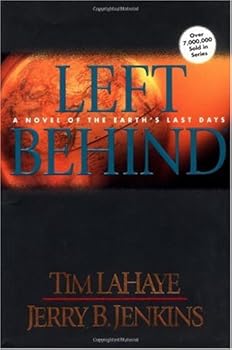
This is the time of year when I am juggling attendance at multiple conferences, each with complicated exhibit schedules and packed with editorial board and committee meetings. I love editorial board meetings. I also love manning our ASCE Library booth at these big engineering conferences as they are the only chance I have to engage in conversation with the end user. I ask questions, I hear their complaints and often get fantastic suggestions for improvement.
The conferences really offer mixed views. Attendees are split between academics and practitioners. These groups have very different needs and uses for technical content. Serving both of these markets well is a challenge for any publisher and I have yet to find one that has figured it all out.
Humanities and social science researchers have expressed concerns about open access (OA) requirements, most recently in a research report done by the British Academy on Open access journals in Humanities and Social Science. Members of the civil engineering community are also listening to the issues and the reactions range from indifference to opposition. This is not to be confused with a lack of knowledge.
As Rick Anderson pointed out in his lecture to the Smithsonian Institution, some OA advocates are partaking in “magical thinking” when it comes to OA being universally accepted and applied. The “resistance is futile” hashtag often comes out when a point against a traditional publisher is trying to be communicated. In some circles OA advocates are declaring victory even though only a small percentage of scholarly papers are published as OA per the acceptable definition.
But back to the engineers. They hear about OA and certainly know what it is and individuals will sometimes say, “Well I suppose it will all be open access one day, right?” The “magical thinking” campaign is working! But when I ask them if they have ever published in an OA journal or paid for OA in a hybrid journal, they say no. It doesn’t seem very important to them. Here are some of the typical concerns I hear:
Paying for OA: “I don’t like this idea of paying for open access, no one needs that.” By “that” he was referring to the fact that no one needs to publish in an open access environment in his field.
Diverting Research Dollars for OA Fees: “Where is the money going to come from? I am already scraping the bottom of the barrel for federal research money.” This author understands that publisher services costs money and assumes that he will have to pay for government mandated public access in some way.
Government Mandates on Open Data: “Well I sure hope the government doesn’t make my data open. My corporate partners are not going to like that. They will stop coming to universities for research and go back to doing it themselves.” I have not seen anything written on this topic so I am not sure of the validity; but, it is a fear, nonetheless.
Mandates for Public Access: “It sounds like these OA mandates are going to make more paperwork for me.” This comment followed a discussion about mandates requiring authors to deposit articles in OA repositories. I am also hearing very little confidence in the universities’ attempts to mandate researchers deposit their articles in an open repository. When asked, I hear back “I just sign that CTA anyway,” or “I opted out of the program. It’s too complicated.”
Alternative Access Licenses: “The only reason to pay is if you want to keep copyright for some reason.” He could not provide a reason for why he would ever need to maintain copyright beyond what most publisher copyright transfer agreements allows authors to retain.
I realize that these comments are anecdotal but there are some statistics that point in the same direction.
Taylor and Francis conducted a survey about a year and a half ago about researcher attitudes regarding access models. When researchers in the “Engineering and Technology” field were asked about their least preferred content license, 48% of respondents (960) chose Creative Commons Attribution Only (CC-BY). In a related question, the most preferred license according to 933 respondents in the field was traditional copyright assignment (30%).
I am uncomfortable with a license that allows anyone to do anything with my work, especially without my permission.
Engineers have concerns about taking their content “out of context.” This is the group that writes the specifications for our entire infrastructure—buildings, water treatment, foundations, roads, pipelines, tunnels, etc. When things don’t go as planned, things break. They also get sued a lot and so they document everything they do and they note exactly which resources they consulted in their design work. The idea that someone could take their work and remix it and then distribute that work without the author’s permission makes them nervous.
The idea that it’s not really OA if it does not have a CC-BY license is a significant challenge for some researchers. Elsevier gives authors multiple license options under their open access offerings. Looking at some of their newest OA journals for engineers, 55% of the papers are under the CC-BY-NC-ND license, 27% are CC-BY-NC-SA license and 18% are CC-BY.
While my personal evidence is anecdotal, I do ask these questions of all kinds of academics in the civil engineering world. Other professionals at similar organizations tell the same stories. All of this leads me to wonder what will happen in this brave new publishing world where their voices are not being heard. Their fears are real—less time for research, more paperwork, loss of corporate funding, and less money available for research projects overall.
I am going to keep asking these questions as there may be a time where the tide turns. As a service provider to researchers, publishers seem willing and have made options available to authors that seek to publish under OA licenses. Engineers are very interested in other initiatives such as ORCID and FundRef. These initiatives offer them tools that save them time, which is always of immense interest to this field.
I am sure that civil engineering is just one of many fields with concerns such as these. It naïve to think that there is one solution that fits all fields. Heck, it’s naïve to think that all fields even see a need for a solution. But where do researchers in those fields go from here? Is there an opt-out button somewhere?
Discussion
17 Thoughts on "Left Behind—Will Proposed Rules in Scholarly Publishing Leave Behind a Population of Researchers?"
The natural voice for the researchers and professionals should be the scholarly societies, but in the US at least I have yet to hear this voice. Many societies filed initial comments on the proposed US Public Access program with the NRC, but they all spoke as publishers, not as the research community.
But then if the membership is divided on a policy issue it is hard for a society to take a policy position. Perhaps it would be most helpful if the societies started surveying their members on these important issues. Here the problem is also that the US program is proceeding in secret.
Early on, OA advocates behaved as if the general public were its customer, and they worked through proxies for the general public — i.e., governments and large funders — and created a system that would be as appealing as possible to the general public. This has resulted in some unrealistic aspects, mandates and “mandates,” and scorched earth rhetoric, all of which now may prove a problem, as the real customer for the next round of OA as a viable business model is the author. OA is proving a harder sell to authors, because some of the “requirements” established to woo government/funder/public support (e.g., CC-BY, Gold OA) are not popular with authors or are viewed with deep skepticism as being superior to the status quo. This is especially true in a funding environment that is being hollowed out, has too many PhDs vying for too few funds, and in which publish or perish is even more acute. It will be interesting to see if OA as a movement can pivot, revise its rules, and undo some of the perceptual and actual damage before authors and a majority of academics write it off. It has become mainstream in a perceptual sense, but it remains fringe in a functional sense.
Your other point is also well-taken. If OA can’t “boil the ocean” but works in some fields very well and is less desirable or realistic in others, will it be labeled a success or a failure? Can the “winner takes all” mentality also be modulated? At what point is “accepted, but as part of a more complex system of embargoes, subscriptions, and repositories” enough for the advocates to declare success?
But OA is not necessarily intended to be a viable business model and given that the author’s have no voice (which is Angela’s main point I think) they are not the next customer, so no pivot is necessary. Moreover, the US Public Access program, which probably dwarfs all other real mandates combined, is at this point precisely a one size fits all model. Nor are there any opt out provisions at this point, just a blanket. Delayed uncompensated access looks like the winner, the damage be damned.
Note that the US model does not support APC based publishing so that game may indeed be over. But the US program is likely to be very complex, which I predicted a year ago, with every agency implementing different rules. US regulations tend to be paperwork intensive and Public Access looks to be no different at this point.
Kent you have a better way with words than me. I was at one of the meetings in 1995 at which one of the first OA journals were founded. The impetus for OA was to make money for the new publisher! The group discussed two ways of making money: 1. page charges and 2. government and large funders. I think altruism came about later.
Thanks for a thought-provoking post, Angela, especially for your recognition of the importance of your community’s contributions to the world at large. This is true for all who contribute to their respective fields of study and practice. Although you focus on your engineering community, I think your message goes far beyond their ranks.
Legislators get all wrapped up in their politics (and often listening to uninformed or misinformed constituents) and don’t realize that they are mucking around in areas they know little about. Same is often true of governance and management with little real understanding of the publishing operations reporting to them. In all cases we have groups demanding actions that do more than just get in the way of good publishing. They get in the way of our progress as a civilization and the maintenance plus continued furthering of that progress.
The literature generated by academic and other researchers along with their practitioner colleagues forms their knowledge bases. We know how important those are to whether or not a field stagnates or develops in a good direction. Perhaps that’s what we need to focus on now and attempt to educate all parties, most especially governments and the public, rather than get mired in a political controversy that is founded on self interest versus common sense and the social good.
I’m not just standing at a bully pulpit here, I’m saying it’s time as an industry we begin working on constructive ways to educate rather than confront; to inform rather than pontificate; and make a real concerted effort to unify ourselves much as those with self interests have done. I realize that when we started SSP we felt that by the very nature of the organization encompassing so many players in the transfer of information that we could not take a single stand. However, times change, environments change, and needs change. We are no longer the SSP of 1978. Although many of our initial founding principles are still sound. The one of absolute objectivity may not be.
We may be at a most important crossroads with a need to join together all the groups serving our industry and through that union bring about a more informed set of governments and publics to minimize the jeopardy we see concerning the least fettered movement of ideas from author to reader.
Unity may be difficult given that the libraries and publishers seem to be adversaries. SPARC represents most of the big university libraries and they want a 6 month embargo period in the US Public Access program, a period which many of the publishers consider potentially ruinous. Several scholarly societies say they think it needs to be 24 months, as now does the British Academy. So the prospects for union are not good, but maybe SSP can help.
On my campus the engineers even object when we schedule a public conversation to talk about open access.
How very interesting. On what grounds do they object?
(Disclosure: I used to be an engineer. See http://www.stemed.info/engineer_tackles_confusion.html)
There are very many predatory engineering journals.
I somehow doubt there are more than predatory scientific journals, but then I do not know what “predatory” means in this context. The concept seems somewhat nonsensical to me, so I doubt it is countable.
My guess would be that engineers do not care for utopian schemes, but it is Dan’s claim to explain.
Interestingly enough, our MOST enthusiastic audience for our conversation of open access has been the engineers. In terms of green OA, why not continue to sell a high impact, heavily used, reasonably priced subscription product, while also allowing scholars the liberal self-archiving of their final versions? Has there been harm from voluntary deposit in institutional repositories of legal versions?
With green OA, institutions could disseminate the work of their scholars, increasing impact for the university and the author, while driving traffic back to the publisher. Librarians could continue assisting users in discovering valuable subscription content, and institutional repositories could gather and showcase the university’s output. Seems like it could be a “win-win” for everyone. Everyone values the best journals, so there is no problem there. Unlike other librarians have stated here, I highly doubt that quality engineering journals will be canceled if they allow self-archiving of author final versions.
As a science librarian working on open access policy, I can say that open access is of interest to many engineers.
Surely if all articles were freely available in a discoverable fashion then subscriptions would decline a lot for most journals. This is basic economics, that one cannot sell what is freely available. Perhaps the best journals would be protected somehow but they must be a small subset of all journals. It is hard to see why engineering would be an exception to this.
My organization does allow authors to self-archive. I don’t think people like reading these. For years, we were posting accepted manuscripts online. These were the reviewed, accepted, uncopyedited versions. Basically what we would allow authors to post. The feedback from the journal boards was that we should figure out a way to NOT post manuscripts while still offering speedy publication. We are doing that now with a single article publishing model. Many of our authors seemed to not like reading unformatted papers and some were uncomfortable with having their work posted without the benefit of copyediting.
I would also assume that readers and researchers would rather have access to the publisher branded version. Luckily, at my institution, we often make readily available the published journal version to all of our affiliates. The version of record from the publisher is served up in large numbers, most of all for the highest quality publications. As a library, we need to provide those journals to our researchers and maximize all systems that aid discoverability and usability.
However, I know from my years of reference work in serving those that are unaffiliated with a university, and also from watching the international download activity on repository postprint versions, that there are many readers and researchers that unfortunately do not have access to the published version. Repositories provide citations and links so anyone with any kind of access can choose the published version for citing, personal preference or other reasons.
Journal authors care about many aspects of journal publication: certification, P&T, h-index, impact factor, rigorous peer review, and all the rest. Many also care about sharing their work widely with others, getting feedback, posting their work in departmental portals, putting legal links to their work on scholarly profiling services, and alerting interested others to their newly published work. Universities have interests in seeing wide dissemination of institutional scholarship.
There are many business models, and it would seem that one or another would be able to work for each publication. If there is not much uptake for hybrid, then journals can work with one of the other options. However, it would seem that the time has come for allowing authors some means of providing open access to their work if they want or need to do that. Hopefully, publishers and librarians will continue to work together in all of this.
I agree Laura. I think that there should be a middle ground and I think that the ecosystem can and should support different business models. That is the point I am trying to make. But the conversions around OA are often clouded by the very loud shoutings of the OA advocates that are demanding everything be free, discoverable, and re-useable. There are sectors of researchers that are not comfortable with all or part of that value offer. My concern is that the voices of those researchers are not being heard and it seems that their concerns are very real.



